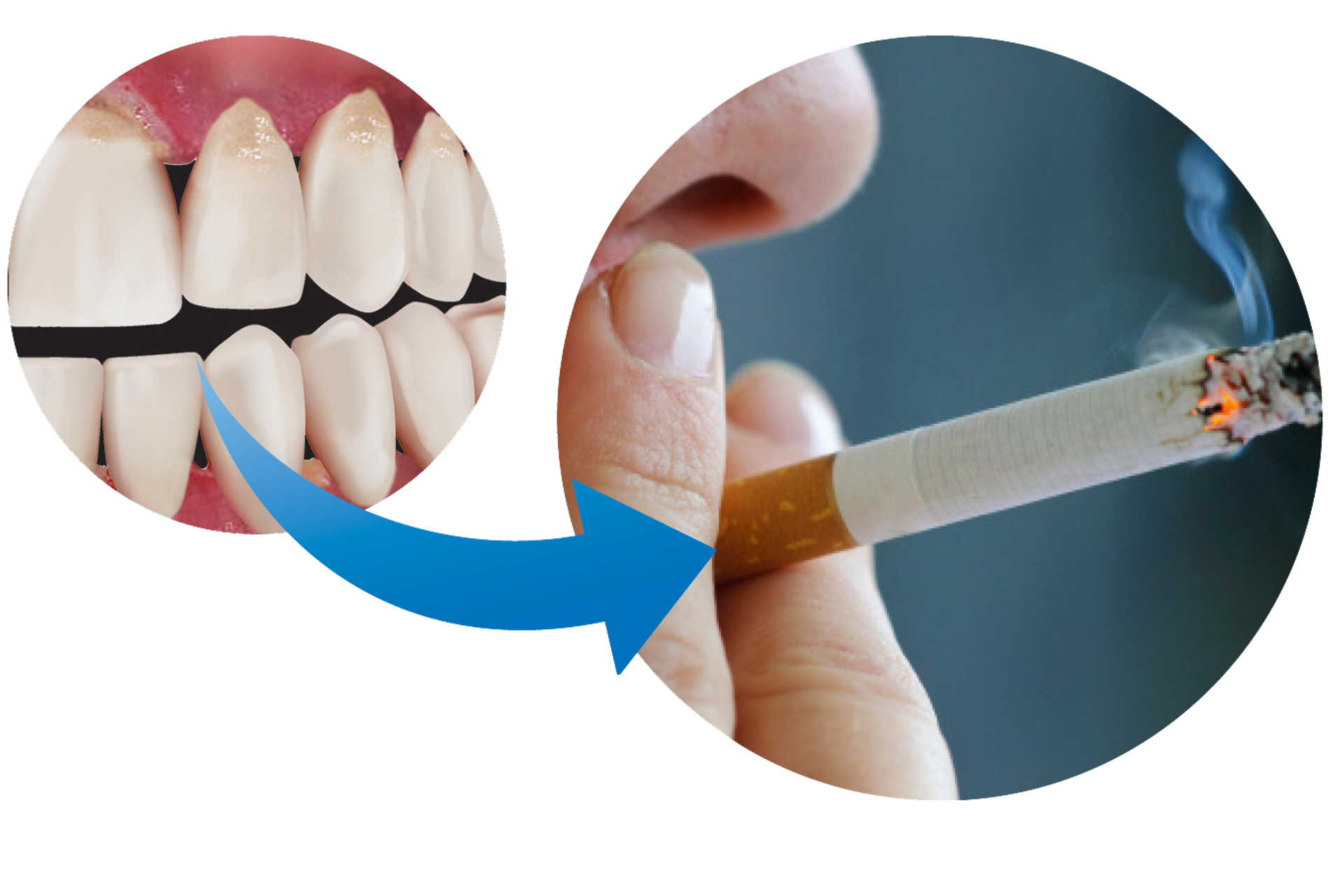Smoking and Gum Diseases
Smoking and Gum Diseases
Quitting smoking is the single most important action a patient can take to help control their periodontal disease. Smoking by itself does not cause periodontal disease but it can make it significantly worse. As a risk factor, smokers are somewhere between 270 - 700% more likely to have significant periodontal disease than non-smokers.

The effect of smoking on the gums is so significant that some treatment options such as grafting, regeneration and implants may not be possible in current smokers, as the risk of failure of these procedures becomes too high. None the less smokers’ gums do get better; they just don’t improve as much as non-smokers, nor as quickly and they are much more likely to suffer relapse of their gum disease.
The traditional signs of periodontal disease (redness, bleeding, bad taste) are all masked by smoking misleading the patient into thinking they do not have periodontal disease. It does this mainly by reducing blood flow to the outer layers of the gums. Ironically, patients able to quit smoking often see a sudden and transient increase in bleeding, not because the disease is getting worse but because the mask has been removed, allowing the redness and bleeding that is occurring deep within the gums to also be seen on the surface.
In addition to the effect on blood vessels, smoking also has a negative effect on the white blood cells defending the body from infection, and pushes the body’s defences in a process that can lead to further destruction of the gums and bone around the teeth. It does this locally in the mouth, and throughout the body once the smoking toxins are absorbed into the blood stream from the lungs. The local effect of increased heat within the mouth is also damaging to the gums, particularly in the palate.
It’s thought that smoking inhibits the body’s natural healing ability, preventing minor infections from being resolved and instead promoting further gum destruction.
Quitting smoking is not easy for most patients, yet today in Australia there are many more ex- smokers than current smokers, indicating that it is certainly possible. How an individual quits smoking is a very personal matter, and no one technique works for all. We know that most patients need to quit a few times before finally stopping smoking. Importantly this should be seen as part of the journey rather than failure.
We also know that patients who have been able to quit, even for a relatively short period are much more likely to ultimately quit for good.
A good starting point is to talk to your GP or your state Quitline (PH: 137 848). They can advise on drug therapies, nicotine replacement therapy and alternative motivational techniques. We know that whatever method helps you to quit it works best if you do it in conjunction with some support. The Quitline councillors are great at helping you out, they are non-judgmental, its confidential and free and they can provide information and options tailored just to you.
Cutting down the number of cigarettes you smoke is a great step along your path to quitting but from your gums’ point of view any smoking is still damaging, so cutting down is only useful if it is heading towards quitting. It will also help to reduce your costs, with the average packet a day smoker now spending more than $10 000 a year.
Some patients are turning to vaping as an alternative to smoking. Although the data is still quite limited, the current consensus is that vaping is still detrimental to your gums and should be viewed only as a steppingstone to quitting. It should be remembered that the damaging effects of smoking are not confined to tobacco alone and other substances (natural or manufactured) are still harmful to gum health. The good news is that while it may take some time, ultimately the gums of ex-smokers become the same as never smokers. It’s never too late to quit.
